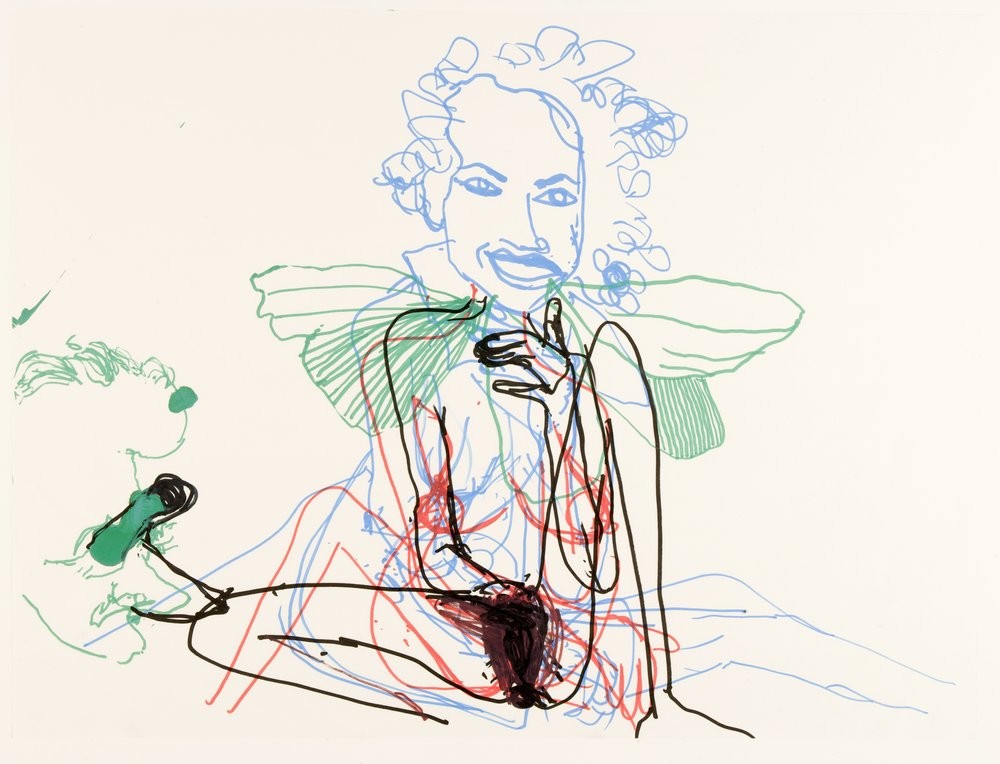
Paul McCarthy & Benjamin Weissman | Cognitive Surge: Coach Stage
For three decades, the close friendship of LA-based artists Benjamin Weissman and Paul McCarthy has fostered a prolific creative discourse resulting in countless artistic collaborations. Their respective work is unrestricted by preconception, generating images that expose bare truths which can be harrowing, enticing, and disarmingly relatable.
Weissman and McCarthy share an avid interest in the unconscious: often envisioned as a place inhabited by the abject, the grotesque, the surreal, the repressed, the crazed. Weissman and McCarthy's works contain cacophonous color pathos, textual largesse, fractured identities, a leering anal flap. But they also point to the social, the shared, an awareness of an other, a persistent need to communicate what one knows to be incommunicable, or what may be meant to be hidden, taboo. We speak different languages, here is this utterance, do with it what you will. We will create our language.
Weissman and McCarthy’s proximity to acting and performance shines a light on the sensibilities shared collaboratively and in their own work. Weissman is the son of an actress, and also an actor himself, having recently appeared in a film by Dennis Cooper and Zac Farley. Weissman is also a fiction writer. McCarthy, whose video performances Weissman has described as “the pulsing id”, engorge themselves on caricatured Hollywood tropes to the point of bursting at the seams. The relationship between internal creative impulse and audience-facing performance emerges in their paintings and drawings. McCarthy’s paintings PEEE and Coach Stage, both from 2015, were created during a performance at Berlin’s Volksbuhne. Wagon wheels and water-sports peer through overlaid text that nearly evades legibility but carries the evidential charge of the act. Western motifs appear in Weissman’s drawings as well, often featuring cowboys and cowboy actors, like Sterling Hayden, who, after his turn as Johnny Guitar (1954), was seared into pop culture as General Jack Ripper, the “precious bodily fluids” guy, in Dr. Strangelove (1964). In Weissman’s drawings, the Strangelove Hayden spews cigar smoke near a a red-smudged cowboy, or a mysterious cabin scene. Perhaps Hayden's ghost haunts Weissman’s sensitive, cabin-like constructions.
The dialogue, discourse and friendship, on display points to an undercurrent indicated by the show’s title. In the artists’ collaborative drawing sessions (which they’ve described as “quilting sessions”), they speak constantly as they draw, catching up on gossip as semi-digested figures populate their pages: creative production becomes a somewhat staged social task that unleashes uncensored impulse. Here the work is not so much about the form that the unconscious takes. Rather, the unconscious here is a process-based means by which a truth of sorts emerges in the form of evidence. Sometimes it is raw, splattery, surprising, but always untampered by premeditation. The resulting acts, criminal or otherwise, while passionate, are born from something more than passion: something primal, messy, and wildly human.
— Reuben Merringer